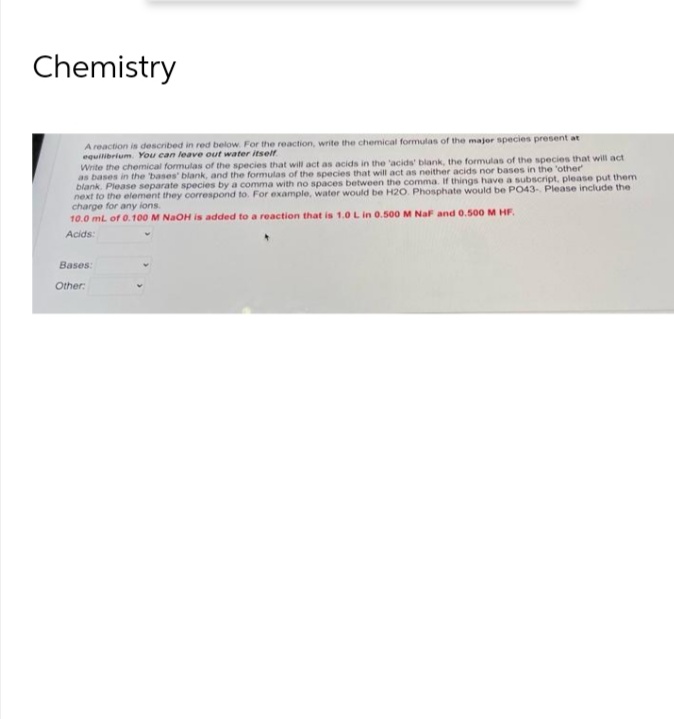A reaction is described in red below. For the reaction, write the chemical formulas of the major species present at equilibrium. You can leave out water itself Write the chemical formulas of the species that will act as acids in the 'acids' blank, the formulas of the species that will act as bases in the bases' blank, and the formulas of the species that will act as neither acids nor bases in the other blank. Please separate species by a comma with no spaces between the comma. If things have a subscript, please put them next to the element they correspond to. For example, water would be H20. Phosphate would be PO43- Please include the charge for any ions. 10.0 mL of 0.100 M NaOH is added to a reaction that is 1.0 L in 0.500 M NaF and 0.500 M HF. Acids: Bases: Other:
Ionic Equilibrium
Chemical equilibrium and ionic equilibrium are two major concepts in chemistry. Ionic equilibrium deals with the equilibrium involved in an ionization process while chemical equilibrium deals with the equilibrium during a chemical change. Ionic equilibrium is established between the ions and unionized species in a system. Understanding the concept of ionic equilibrium is very important to answer the questions related to certain chemical reactions in chemistry.
Arrhenius Acid
Arrhenius acid act as a good electrolyte as it dissociates to its respective ions in the aqueous solutions. Keeping it similar to the general acid properties, Arrhenius acid also neutralizes bases and turns litmus paper into red.
Bronsted Lowry Base In Inorganic Chemistry
Bronsted-Lowry base in inorganic chemistry is any chemical substance that can accept a proton from the other chemical substance it is reacting with.

Step by step
Solved in 2 steps









